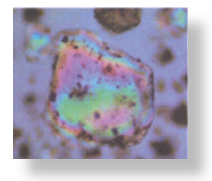From one side of Australia to the other, farmers are asking the same question. The costs of making the soils produce are going up, and the output is going down.
Back in 1890, In the South Gippsland area at Poowong a settler was regularly producing 20 tons of potatoes per acre, (50 tons per hectare) with artichokes and beans planted between the rows. His neighbour was producing 20 tons of onions per acre. And this was done before chemical fertilisers were known, before certified seed, and before chemical sprays to stop diseases.
Potato cropping farmers now expect an average of 12 to 14 tons per acre on dry land cropping. Only 65% of 1890’s
Why, in spite of all our modern aids, are we going backwards?
The secret lies in the composition of the soil. After many years of intensive agriculture, the organic carbon in the soil is almost depleted. This is giving us tight soils that repel the rain, lock up the nutrients and have virtually no microbes, bacteria or fungi in their makeup.
In other words our soils are no longer alive and our plants are growing on top of the soil, utilising the chemical inputs that we increasingly throw at them and the whole process is turning the soil more acid, less productive and more vulnerable to climate changes, and eventually to an unsustainable situation. This is also leading to erosion, pugging, salinity and loss of ground cover.
The question is “what can we do to reverse the trend?” ![]()
If we look at the soil as a main building block on the land, (everything that we grow or produce starts there), we need to return to the natural condition it was in before European settlement and agriculture affected it.
Over the years we have been depleting the organic carbon, the base building block of our soils, alkaline or acid, which in turn has affected the soil life, the worms, microbes, bacteria and fungii. They require the organic carbon for sustenance and to remake it into nutrients and minerals that in turn feed the plants. The better the condition of the soil, the deeper the plant roots grow, and the more nutrients that are available. This also assists in draining the soil in wet weather and retaining the soil moisture in the dry months. A healthy soil also leads to healthy plants.
The problem needs to be tackled on several fronts.
 Australian soils are amongst the most fragile in the world. The native wildlife are very soft footed and don’t damage the environment. The farm animals that we have imported are much more heavy footed and trample or compact the soil, while their sharp hooves cut up the soil profile leading to pugging, erosion and other problems.
Australian soils are amongst the most fragile in the world. The native wildlife are very soft footed and don’t damage the environment. The farm animals that we have imported are much more heavy footed and trample or compact the soil, while their sharp hooves cut up the soil profile leading to pugging, erosion and other problems.
By reducing the weight pressures on the soil, we will gain benefits of more open soil profiles and more stability. The less the soil is disturbed the more benefits that will be seen.
 To get more organic carbon into the soil, we need to use more composting materials, more leaf and green materials, more natural carbons such as coal based conditioners, plant based products (eg. mulchs), to improve the tilth and encourage the soil life to once again do their magic work.
To get more organic carbon into the soil, we need to use more composting materials, more leaf and green materials, more natural carbons such as coal based conditioners, plant based products (eg. mulchs), to improve the tilth and encourage the soil life to once again do their magic work.
A recent documentary on A.B.C. television which hilighted the story of the Amazon black soils, proved that it could be done. The Mayan Indians had the knowledge when Cortez plundered their riches, but he missed the biggest jewel of all, their knowledge of the living soil. This knowledge has been lost until recently and now world scientists are trying to unravel the secret. The Mayans using their knowledge were able to achieve 800 per cent increase in production on their poor based soils.
Australian farmers have increased their production from 10 bags of oats to the acre to 30 in 18 months, and carrot crops from 25 tons per acre to 35 tons in a similar period.
If the scientists are successful, the third world countries will once again be able to feed themselves and we will be able to farm with very few chemicals and be sustainable.
Editorial from Jeff Clark, coal based organic fertiliser and Landcare Consultant.